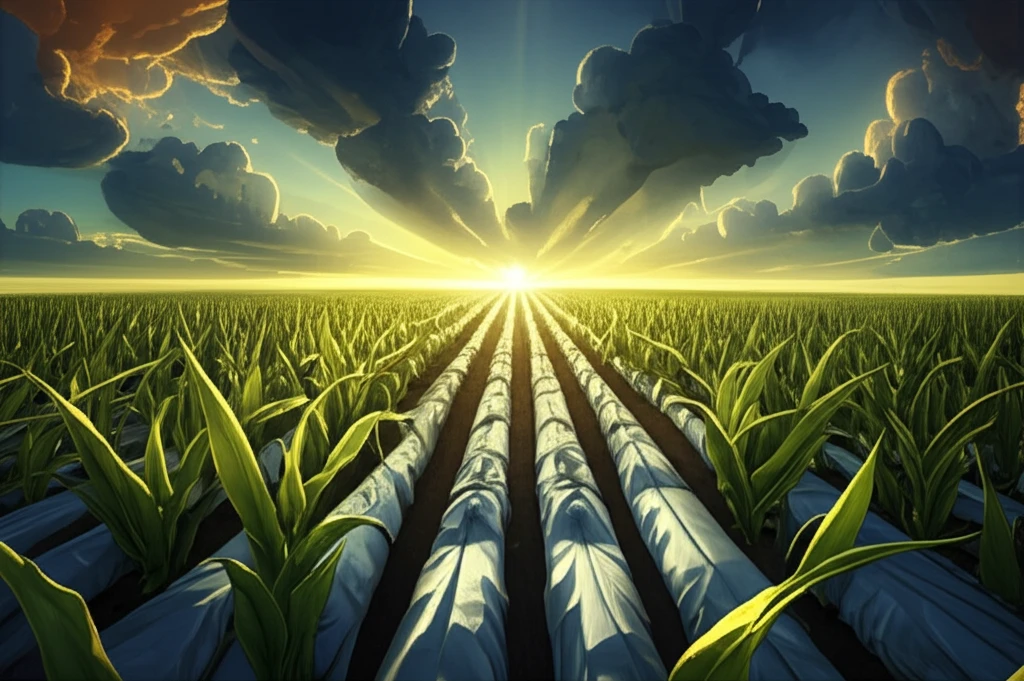
Unlock Bumper Harvests: The Rain-Fed Maize Miracle You Need to Know!
"Discover the secrets to optimizing light and growth in rain-fed maize crops with innovative ridge-furrow and film cover techniques. Maximize your yield today!"
In the world of agriculture, light stands out as a critical resource for plant growth. The way plants intercept light (LI) and use it efficiently (LUE) is profoundly affected by their physical structure, dictated by both their genetic growth patterns and how we manage them agronomically. Practices like the ridge-furrow system, combined with plastic film cover, are gaining traction for their ability to influence leaf morphology, thereby altering light transmission, the light extinction coefficient (k), LI, and LUE.
A recent study dives into quantifying LI and LUE in rain-fed maize (Zea Mays L.)—a staple crop in Northeast China—under varying combinations of ridge-furrow and film covering ratios. The goal is to uncover strategies that optimize maize production in regions where climate conditions pose significant challenges.
The research focuses on the DRF system which alternates between wide ridges (0.70 m wide, 0.15 m high), narrow furrows (0.10 m), narrow ridges (0.40 m wide, 0.20 m high), and additional narrow furrows (0.10 m). Field experiments were conducted over two years in Jilin Province, Northeast China, testing four distinct treatments: no ridges and plastic film cover (NRF), ridges without film cover (DRF0), ridges with 58% film cover (DRF58), and ridges with 100% film cover (DRF100).
Ridge-Furrow and Film Cover: A Deep Dive into the Data

The results are compelling. The DRF system significantly increased light interception (LI) by 9% compared to the control group (NRF). While film cover provided some marginal improvement, the core impact came from the ridge-furrow structure itself. Specific leaf area in DRF experiments with film cover was significantly lower than in NRF, and the leaf angle was 16% higher, which led to a 4% reduction in the light extinction coefficient (k).
- DRF system boosted light interception by 9%.
- Film cover enhanced light use efficiency (LUE).
- Leaf angle increased by 16% in DRF experiments.
- DRF100 showed a 22% increase in LUE.
Practical Steps to Maximize Your Maize Harvests
In sum, farmers now have proven strategies to enhance light utilization and overall maize productivity in challenging environments. By adopting asymmetric ridge-furrow systems and integrating film cover, growers can significantly improve light interception and efficiency, leading to better yields and increased resilience in the face of climate change. The key lies in understanding and applying these methods to tailor crop managements effectively, particularly in regions grappling with reduced solar radiation.
